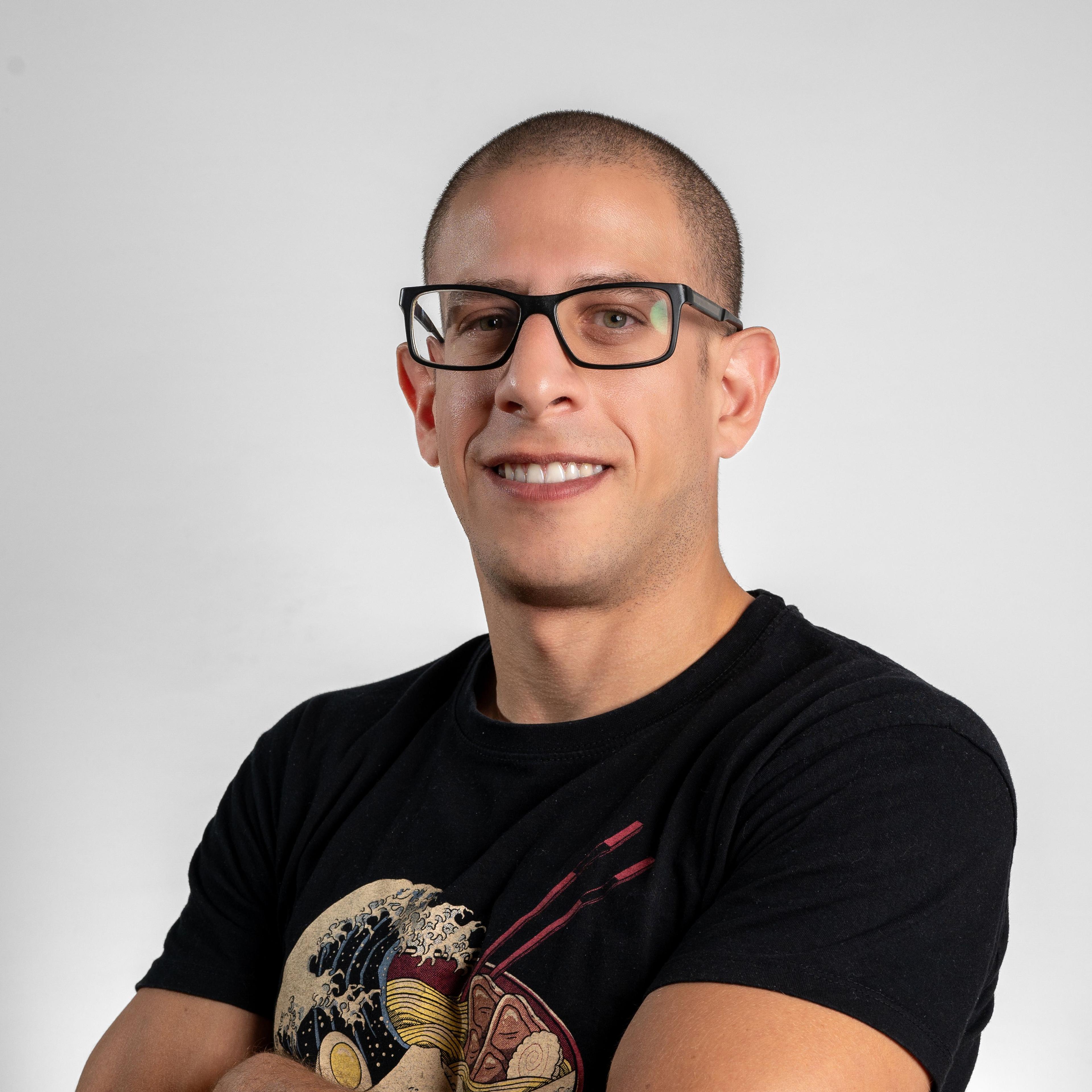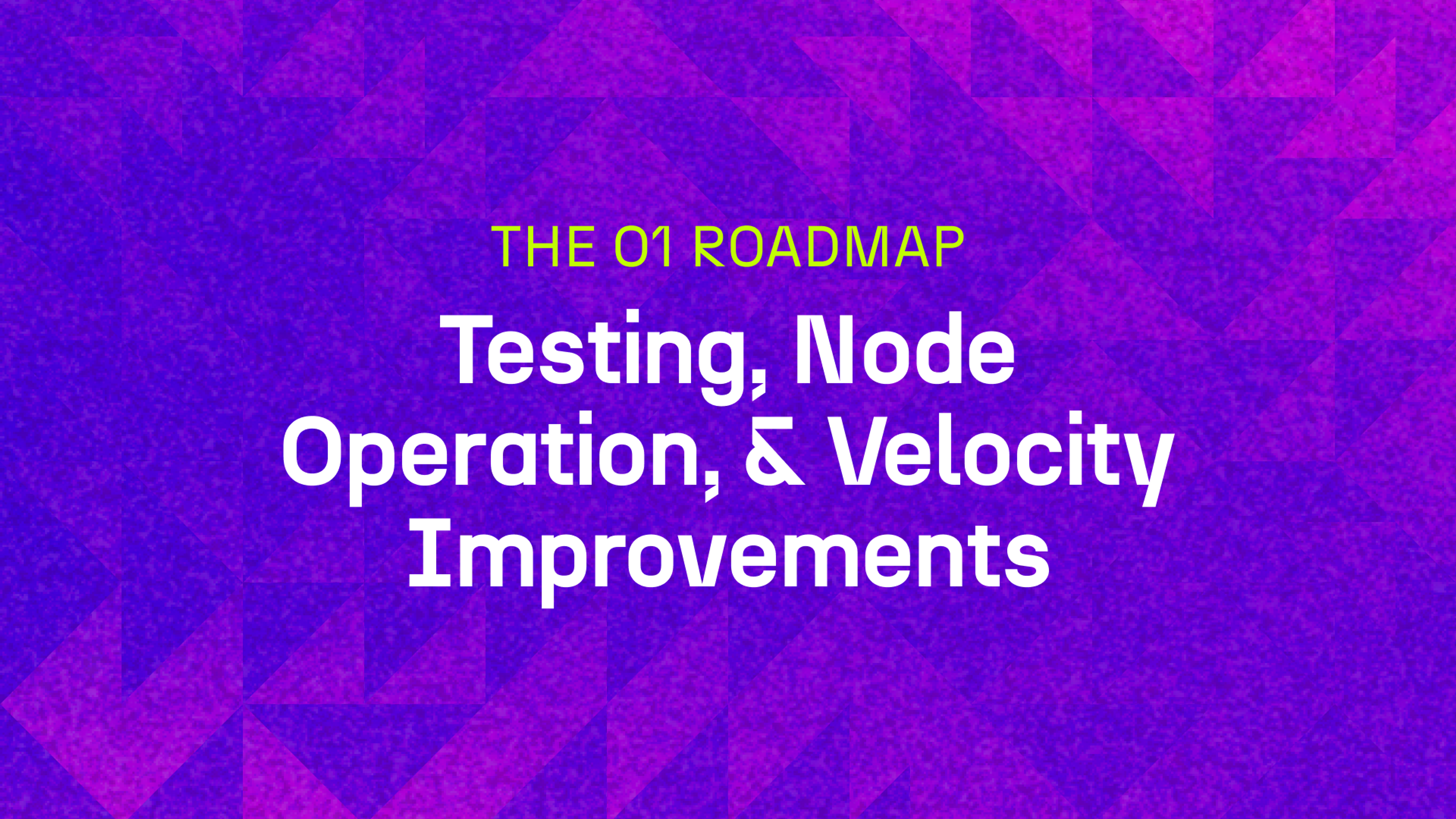This post is part of our roadmap series, diving deeper into the focus areas outlined in the o1Roadmap. Each post explores how each Engineering team at o1Labs is pushing Mina forward by covering what we’ve delivered (recent milestones), what we’re building (current initiatives in progress), and what’s next (future priorities).

The Platform Engineering (PE) team at o1Labs is key to enabling the success of the entire engineering organization. As we work towards the ambitious goals outlined in the o1Labs roadmap—such as reduced slot times in Mina, the development of o1VM and o1js, and [Project Untitled]—the PE team's role is to provide the essential infrastructure, tools, and services that empower our engineering teams to work towards their own roadmaps.
To achieve this, the PE team focuses on building and maintaining the core platform that powers our development and testing environments, which in turn supercharge our engineering teams so they can:
- Work efficiently, by having control of development, test, and delivery environments.
- Fail fast, by employing a trusted toolkit for iterative testing.
- Deliver value, by relying on meaningful feedback loops like community interactions and Software Development Life Cycle (SDLC) observability.
What We’ve Delivered
In the last year, we conducted a shift towards GitOps and drastically increased the reliability of our testing and production setups, directly impacting the introduction of zkApps to Mina. Additionally, commitment to adopt self-managed FOSS solutions (e.g., Cloud Native Computing Foundation (CNCF) landscape) has torn down cost barriers to iterative testing and ubiquitous observability, enabling discussions about release cadence, and drastically reducing the operational pains of maintaining high network availability.
We believe that the timely achievement of the o1Roadmap will be the result of empowered teams, well-orchestrated testing campaigns, and a deeper involvement with the community.
What We’re building
Our role within o1Labs requires us to look at the challenges presented from a different perspective. Ultimately, the PE Team succeeds when teams enjoy complete ownership of their SDLC, itself composed of efficient, reliable, and secure enablers (e.g., toolkits & services).
Empowered builders
We plan to extend our current observability infrastructure to focus on detecting regressions and optimize our CI/CD pipelines. With detailed pipeline performance data, we will be able to expedite issue identification and resolution, boosting our development efficiency.
We will also reduce external dependencies (e.g., cloud service providers) and enhance operational control by deploying provider-agnostic, self-managed solutions for logging and events management. By self-managing our testing setups, we will derive deeper insights into the operation of the running workloads. This will enable the creation of a new category of event-driven workflows across different tools and platforms with our new logging and event management. We expect teams to configure event generators/sinks for example, establishing advanced automation scenarios, such as automated testing triggers and deployment validations, or to alleviate operational expenses related to maintaining network availability.
Scalable testing campaigns
Based on our experience with the Mina Berkeley Hard Fork, we understand private cluster testing allows for faster iteration cycles. To accommodate production and highly specific development environments, we need to be able to reliably recreate a wide variety of scenarios, often across heterogeneous infrastructure. To this end, we will adopt an efficient, scalable, and secure configuration management methodology for deploying Mina Nodes on Kubernetes. These new Mina Kubernetes Files will deal with most deployment-time complexity, effectively providing a set of exemplars tuned to increase our deployment frequency.
Meaningful feedback loops
We are data-driven.
The PE Team's roadmap presented so far is the result of observations of the current state supported by metrics and logs, and most importantly, people.
It renders a future in which developers are able to identify and resolve issues faster, primarily due to the additional insight provided by observability. We can test more scenarios - self-managed provider-agnostic solutions ensure we can efficiently and sustainably recreate various use cases.
Lastly, to maintain focus on the highest priority issues, we plan to strengthen our collaboration with Node Operators in the Mina ecosystem. This involves:
- Understanding deployment challenges in various environments.
- Replicating popular setup configurations.
- Developing solutions that address real-world operational needs.
Creating educational content and tooling to support the broader Mina ecosystem.
What’s Next
We believe our roadmap strikes a careful balance between ambitious innovation and practical necessity. Focusing on building a foundation to support o1Labs' vision for this year.
The success of this roadmap will be reflected in the enhanced ability of our teams to innovate, experiment, and deliver value to the Mina ecosystem and the whole Web3 landscape. Through cloud-agnostic solutions, improved observability, and automated workflows, we're carving environments where the o1Labs teams can focus on what matters most: building the future of Web3.
This is a continuous transformation effort that is not solely about implementing new tools or processes but about creating ecosystems where innovation thrives, testing is comprehensive yet efficient, and our community remains at the heart of everything we do.
Let's go!

